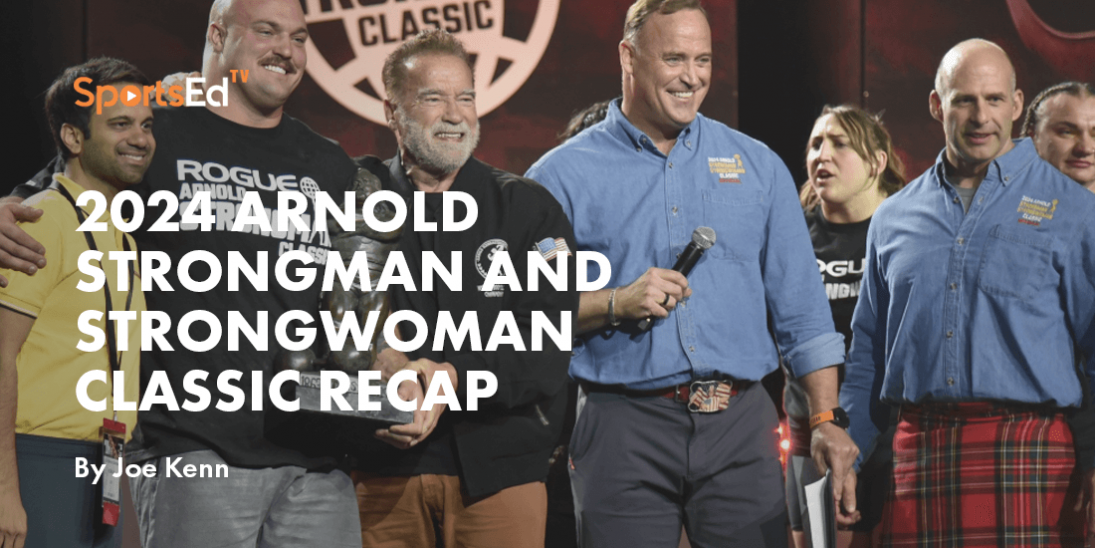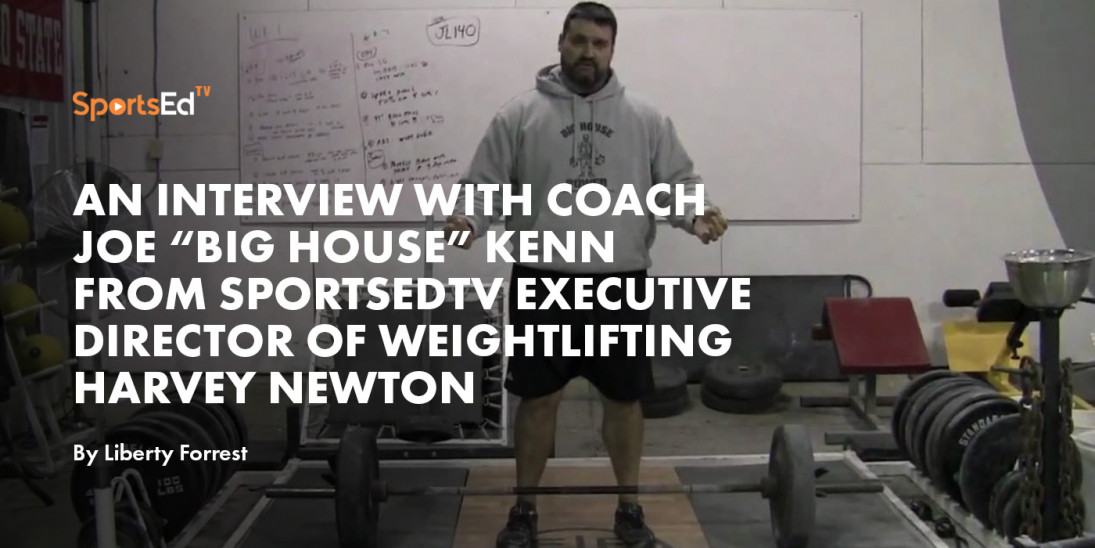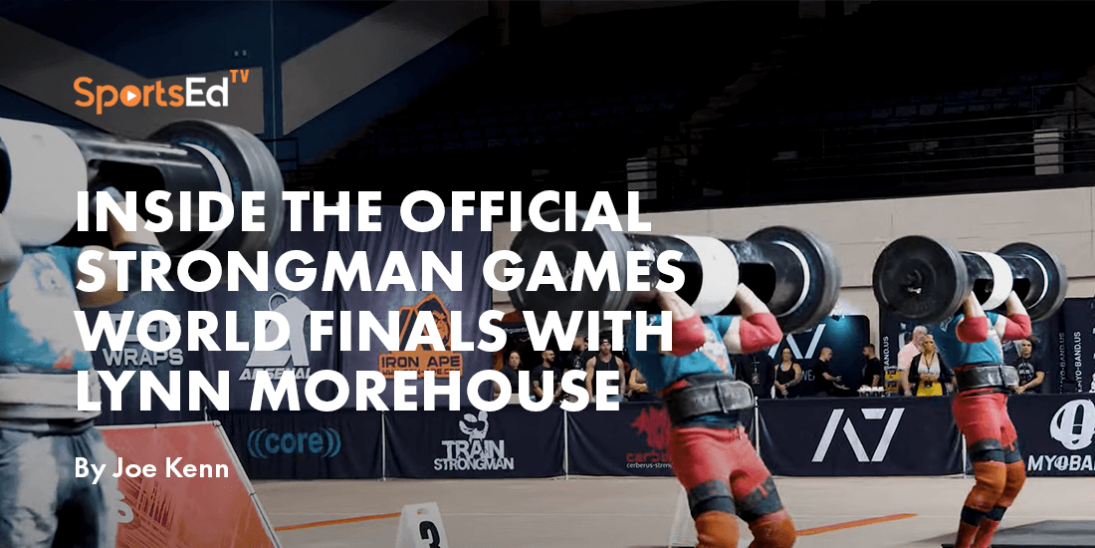Strength And Conditioning
Welcome and thanks for visiting...

So, You Want to be a Strongman Coach
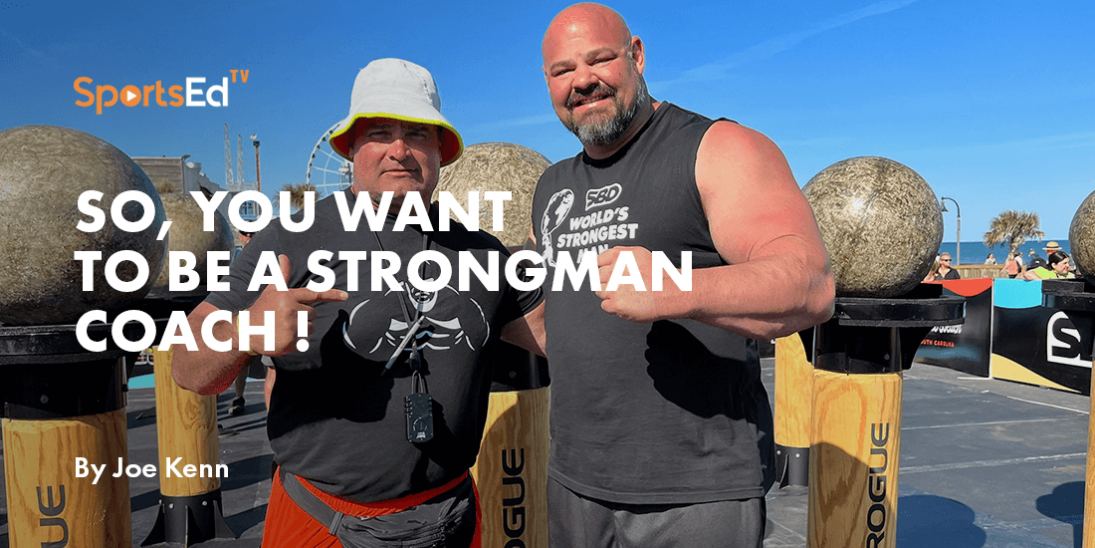
So, you want to be a strong man, coach. Hi, this is Joe Kenn, senior contributor for strength and conditioning at SportsEdtv, and I'm here to share with you my two-year journey as lead strength and conditioning coach for Brian Shaw, the four-time World's Strongest Man.
A little history between Brian and myself. Brian actually did an internship for me at Arizona State University in the mid-2000s. He was an excellent candidate, and he was an aspiring strength coach who I believe would have had a tremendous career in coaching. But one thing happened that I wasn't expecting. Brian still had the competitive itch and was looking for another challenge as an athlete after being a basketball player in college.
After accepting a graduate assistant position with us, he came to me and said, coach, I think I need to step away. I want to get involved in the sport of strongman, and I believe I can challenge one day to be the world's strongest man. Piggyback a huge career. Almost 20 years at the international level. Brian accomplished that feat on four separate occasions, which makes him one of the all-time greatest in the sport of strongman. Some believe, like I do, he is the goat, the greatest of all time, with what he's accomplished on the competitive stage as well as what he's done for the sport. But it takes somebody with a special drive and obviously a leap of faith to leave one prospective career and take a shot at chasing goals. I will always give credit and respect to those who believe in themselves.
And when you take that leap of faith, who am I to begrudge that fact? We wished him well, we stayed in touch, and numerous years later, I got a call asking if I'd like to join his team as one of the coaches that prepared him for his last two World's Strongest Man competitions at the ages of 40 and 41 years old, making him one of the oldest competitors ever to compete at the World's Strongest Man competition. He accomplished the feat of making the World's Strongest Man finals the 14th and 15th time of his career. Although we didn't win the title, it was an experience of a lifetime. I cannot thank him, his wife Kerri, and the rest of the team for accepting me and what I could bring to the team as far as my expertise in the field of strength and conditioning. But I did learn a lot, and at some point in time, when you're always reinventing yourself, what you find out is for everything you know, there's a lot that you don't know. And that's when you become a white belt. And when it came to the sport of strongman and the specifics of strongman, I was a white belt. So, without further ado, let's talk a little bit about the sport.
The Sport of Strongman
The sport of strongman, obviously, is to challenge yourself with different types of events that test your overall strength. Some of them are one rep in nature where you're going to lift the heaviest amount of load possible, and then some events are extreme heavyweight where you're going to do max reps.
But the coolest thing about the growth of Strongman is it's not just Strongman anymore. It's Strongwoman, and the strongest women in the world now far eclipse anything you can imagine overall, male or female, with what they're able to accomplish. It amazes me to watch the women train as well as compete at these levels. It is just the loads that they're using, the technique that they have, and the exuberance that they display is second to none more so than the men. I've always said that training women is the ideal situation. They love what they do. They always do it correctly. There's never any blowback. They're extremely coachable. But that's for another article.
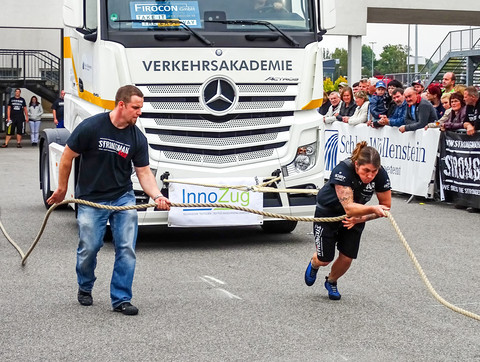
One of the things I will say about Strongman and Strongwoman is the growth of the sport has grown exponentially it’s early beginnings. One of the biggest events up next is from December 1st to 3rd in Charleston, West Virginia. I will be attending the Official Strongman Games World Finals, and in this event, over 300 athletes will compete for a world title in specific weight categories or age brackets. They'll have the world's strongest woman under 64kg, similar to that, or 60kg, the world's strongest man over 50 years of age.
The only title that won't have a world strongest classification is the men's Open. But the men's open does lead to you qualifying as one of the top 30 individuals who will compete at World's Strongest Man. So, if you're interested in the sport and you’d like to get a chance to see it in action, find a local event. But if you want to see some high-level action with some high-level competitors and you're close to Charleston, West Virginia, I would check it out because you will really get mesmerized. You will get enthused, and you will gain a lot of respect for the amount of loads being moved and the way these people prepare as they try for a world championship title when you make it as a competitive, professional strongman.
The Grand Slam Events of Professional Strongman
The World’s Strongest Man
There are four events that I consider the Big Four or the Grand Slam events of Strongman. There's the World's Strongest Man. And let's understand the World's Strongest Man is the title right now that everyone chases. That's why that event is so important to the professional male strongman. Thirty competitors are invited. They're broken up into subgroups and heats. The top two highest individuals from the five qualifying heats earn the trip to the finals. Then, the top ten compete to earn the title of World's Strongest Man.
What will happen is the athletes come in, they check in, they get their hotels. Everything's ready to go. Their teams come in. The day before is a rules meeting. They have a bunch of interviews. Then they have to go to what's called the boneyard to test the equipment. Then, they'll have two days of preliminary rounds. They will go through six events, three each day, and then the top two individuals from each group move on to the finals. If you come in second or third, they have what's called a stone-off. Those two people have to do an extra event. That's event number six. And the winner of that goes to the final. So, if you are third in points, but you're a better stone lifter than the second-place finisher in the prelims, there's a good chance you may wind up catapulting to the finals. From there, a new six-event competition. Points go back to zero, three events each day, and then you end on the Atlas Stones, which generally always finishes World's Strongest Man. The winner of those six events in total points will be crowned the World's Strongest Man. And again, that's the creme de la creme. That's what people judge you on. How many World's Strongest Man titles do you have?
The Arnold Classic, The Shaw Classic, The Rogue Invitational
The next up is the Arnold Classic. The Arnold Classic is more of a heavier event than the World’s Strongest Man. Ten individuals are invited to compete. The Arnold Classic will have more static strength events and moving events with short distances. It was created to subsidize the more movement-type events of the World's Strongest Man. There are five events over two days. That is the second of the big four.
The third is relatively new, and it's named after Brian. It's the Shaw Classic, which now, starting in 2023, earned you the title of The Strongest Man on Earth. This is a super heavy event. Eight events over two days. Top 16 athletes. And then the final is the Rogue Invitational, which has an extreme amount of good prize money. That's a ten-person invite, six events over two days, three each day.
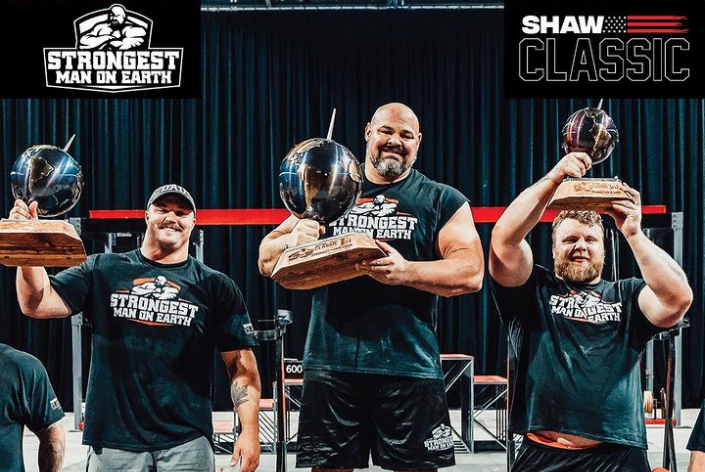
Those are the big four. That's what I consider the Grand Slam. This year, we almost had a Grand Slam winner. Mitch Hooper won three out of the four, placing second behind Brian at the Strongest Man on Earth competition at the Shaw Classic. If you're a fan of the sport, you understand what I'm talking about. If you're not, those are the big four that everyone's chasing.
There's a huge series called Giants Live that runs overseas. A lot of the top-flight competitors will compete in several Giants Live events as well as hoping to participate in the big four.
What Did I Learn?
What did I learn going in? I accepted a big challenge. Here's a gentleman who's won four World's Strongest Man titles. He's considered the best of all time. He's moving on, and he's getting towards the end of his career. He wants one more run at the title, and he asks me to be involved. Obviously, I say yes. I think I know what I'm getting myself into. But I had a lot to learn.
Some of the things that you have to consider when taking this job. How well do you know the athlete? What do you think you can help him with? What does he need help with? And how can you help build the entire package that gives him confidence and success? I was brought in specifically, I believe because Brian was having some lingering hamstring issues. I'd always texted back and forth with him, and he felt he needed some changes in his programming and maybe be exposed to some new movement patterns and training plans that could help rebuild his confidence in his hamstring. Brian was one of the greatest deadlifters of all time in strongman competitions. With that said, we had to lay out a plan. And a lot of that was exposing Brian to exercises that generally aren't in a strongman's package.
We introduced this whole rebuild to build a more resilient and robust World's Strongest Man competitor. With that, when you're dealing with elite-level athletes, the hardest thing to do with them is break down their technique and rebuild them. Why? Because they've done this for so long at such a high level. They understand how to maximize compensation and deficiencies and let their strengths overpower their weaknesses. But as age and reps continue to build over their careers, a Strongman in particular, sometimes things are going to break down. It's going to get exposed, and injuries occur. We had to look at it from a more general standpoint, starting out, and then funnel it in as we got closer to the competition. And that's what we did. One thing you must understand with the great athletes is it takes time. And when you've got major competitions coming up, it gets frustrating for the athlete.
The one thing I will give Brian credit for is he stuck to the plan. He believed in it. And the last two years it took two years to see the benefits. Year one. A lot of frustrations. Confidence still was increasing, but not the type of results we wanted to see in competition with the deadlift. One year later, when we're at World's Strongest Man for the last time, every veteran strong man, all the individuals he had competed with in the past, said Brian's deadlift looked the best it looked in years.
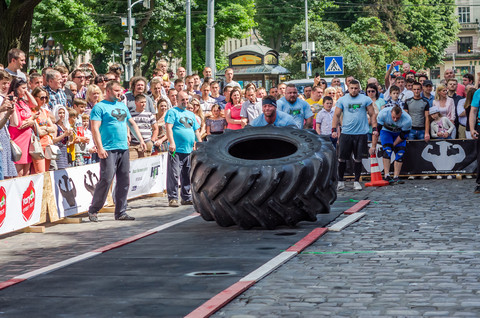
And then he topped that off with a monster 1050 pull in the Hummer tire deadlift at the World's Strongest Man on Earth competition, aka the Shaw Classic. It took two full years for a rebuild. You have to understand it's a lot easier to train novices. They will see improvements a lot faster. But when you're dealing with an athlete who has done it one way for that many years, the rebuild will take time. We've got to understand who we're dealing with and what that process can look like. And now, that experience gives me an even better understanding. If I were to work with another individual with that amount of experience and that amount of mileage on their body again, the rebuild of an area of the body that needs to be overly corrected from years of compensations and deficiencies is usually hidden by the fact that they're one of the strongest men in the world, we must address the essence of time.
So be aware of who you're training. Build out the needs analysis. As you're creating the exercise pool, do not be afraid early in the process to expose that athlete to movements that generally aren't considered movements that would fit into the programming of a Strongman.
A Sporting Athlete versus a Strength Athlete
The next point that I learned is that I spent my whole career as what I call an athletic team sports strength and conditioning coach, meaning that for most or all of the athletes that I trained, the weight room was just part of a solution. It wasn't their practice field if you understand what I'm saying. For example, I come in the weight room as a football player. That is a secondary aspect of my development. The skills of what happened on a football field are what I'm being evaluated in competition, no different than in basketball, volleyball, tennis, etc. But, when a strongman comes into the weight room. That is his practice field. That is her practice field. And that has to be a serious awareness as a coach because now the things that happen in there matter when it’s competition time, just like a powerlifter or a weightlifter or a bodybuilder in their disciplines, what it accomplishes in the weight room, aka their practice field, has a direct correlation of what's going to happen in their competition, where in the athletic team sports, they can have a bad week in the weight room and still excel.
In team sport. Let's be realistic. Most of them can play their sports without the weight room. The weight room can assist them improve in certain things and protect them. But the truth is they can play their sport without lifting weights. For those in strength sports, powerlifting, weightlifting, bodybuilding, CrossFit, and Strongman or Strongwoman, the weight room is their practice field. When you're dealing with that, you have to remember that, hey, you can't really have off days in the weight room, so you have to learn how to adjust.
Auto Regulation
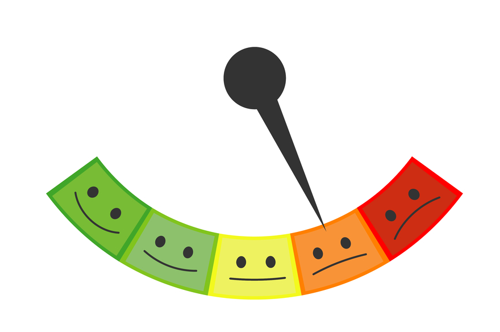
And one of the things you'll find out is from novice to elite. There's a whole different range of training modalities that a coach needs to understand. With novices, you can be more structured program-wise because they're going to see results faster. With the elite, there's going to be a lot of ebbs and flows. What we would talk about here is the athlete understanding the day, the mood, the stress, how they feel, and how they recovered. And you may have to get into a pure auto-regulated plan when it comes to the competitive stage. And what I mean is you may have a plan, and that plan may be adjusted within a half hour of going to the gym. It just was a bad day. They didn't sleep right. They had a bad day at work. If they're working, they come to the gym. They're not feeling it. You have to make an adjustment, but you have to build that adjustment to make sure it's still a positive session. Another thing that I've learned, too, that I really like is what I would call a training range. Hey, today is heavy deadlifts. What you'll find is we're going to work up to between 700 and 800. Here are the goal sets and reps. You'll find the load based on how you're feeling (autoregulation).
This is more important in that comp stage where you're pushing loads or reps. Depending on what the events are for the competition earlier on or in a non-competition cycle, you may be able to play with percentage-based training. But what I learned as a key point is when these high-level athletes enter the competitive stage, math is out the window. The first mistake that I made was trying to utilize math in the competition stage. There were too many things going on, and the event training picked up. It really maximizes effort to a point where the athlete is thinking about specific numbers and reps, and that really is hard to register throughout the competitive stage. So, throw out the math work on auto-regulative processes with the athlete or what I call training ranges, where here's your number, here's your range, here's your set and rep package, go attack, and we'll make adjustments from there.
Taking Ownership
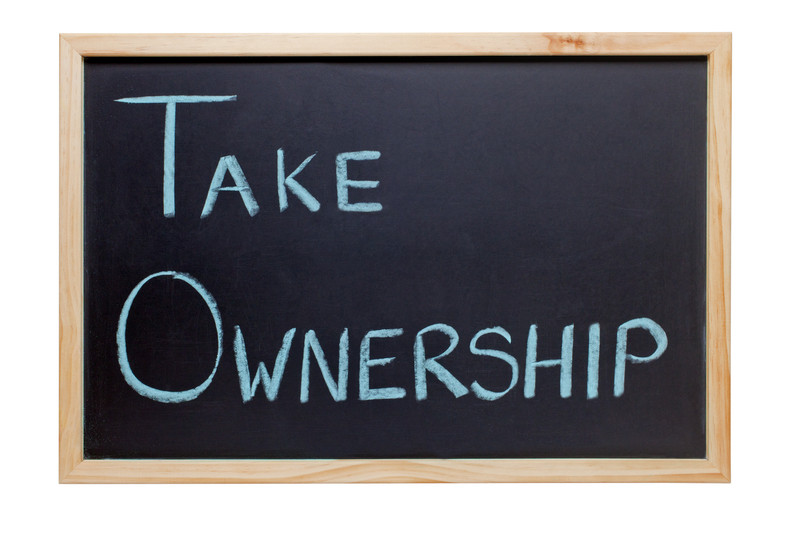
When you're building out your staff, so to speak, especially at the higher levels, an athlete with an extreme amount of experience in his sport has to understand the difference between being coachable, over coachable, and taking ownership. That's one of the things we learned in year one with Brian. Brian is such a great person. I felt like he was too coachable at times and needed to correct me on things that he was willing to listen to because I was the coach, but he knew that there were other ways he'd done it in the past.
We corrected that year two because in our debrief after year one, we found out what worked better for both of us, and year two was a much better relationship as a coach, athlete, athlete, coach, where he became more of the coach too and gave me feedback and then I figured out how to design the plan. So again, the more elite the athlete, the more ownership as a coach. Remember, you are part of this team, and you're servicing that athlete. Allow that athlete to have ownership and let them know this is for them. The athlete has to continually give back to the team, the staff, and myself the information needed to make the corrections moving forward so that we have overall success. That's not to say you're a good coach or a bad coach. That's telling you you're a very good coach because you understand your role and you understand how much value that athlete has to give you the information that can help you do your job better.
I always loved coaching the professional football ranks because those athletes understood their bodies so well. They can give me information that I didn't have. It is the same thing with the strength sport athlete. That stuff matters even more because their competition relies on how strong they are in that particular event on that particular day.
Event Coach versus a Strength and Conditioning Coach
Another great point I learned moving forward after two years is this. There is a big difference between being a strength and conditioning coach and an event coach.
That's the biggest differential that I saw from year one to year two, and where I felt my role was as the strength and conditioning coach. Let me help build the package, build the plan, organize the sessions, and build the packages that are more general strength in nature. Allow Brian to be the head coach and take that ownership of understanding the events better than I do, helping build the calendar up when the event should fit and the types of loading we need at that time. And then I can help piggyback with sets and reps, rest times, etc.
With that being said, that's where it comes to the most important thing as a coach. Know your role and manage your expectations. And that's what we found in year two: understanding each other's roles way better. And we had a much better year two than year one. The results on the day of the week of competition transferred to a better look. No, we were fourth year one, seventh year two. But that's a story for another day. But when it came to building the total package. It really helped that he took the lead on the events because I'm still learning the events.
I'm still trying to get better at understanding how to train for those events. The hardest thing for me as a strength and conditioning specialist who is not as strong as these elite athletes is understanding the loads that they can use compared to what I expect is strong. If I program a 650-pound deadlift, that seems like a lot of weight to me. But for Brian, that's 65% of 1000. He's pulled over 1,000 pounds before. For him, that should be a relatively easy day, a non-strenuous day. I had to wrap my head around how 800 pounds is 80%. But that's where I learned not to use math in competition because, depending on how the ebbs and flows of a day go, that 800 can be very heavy for the athlete.
The Accessory Coach
Understand who you are and what's the best that you have to offer. What I found out was my value was in all the little things that athletes don't like to do because they don't think they need it. I call these the accessory plans, but more importantly, their protective plans. Things that are going to keep them robust and resilient throughout their career as Strongmen. And what happens is younger Strongmen don't think they need it. And then, when it's too late, they get hurt. Now they understand they need it. If they implement it now, like Brian did, over time, you'll have a long and prosperous career.
Nobody has done more in World's Strongest Man competitions than Brian Shaw has. He took much of what he learned as a coach and an athlete and brought that to the forefront of strongman. Pre-activity prep, or what people call warming up before events, brings simple things like stretch bands. Dick Hartsell stretch bands. Back when he first started, nobody was doing that. Brian was an innovator in a lot more ways than people thought. But this is the whole package.
This is what I think a team sports strength coach can bring to an individual sport, like a Strongman, is all the little necessities that you're utilizing to help protect athletes. That's what I learned about manipulating the volumes in the accessory work. You can really have a huge impact on the training of a strongman athlete. As you're learning the events, then you can give them just subtle hints techniques, techniques as I learned through Liane Blyn, who was a World's Strongest Woman competitor in the mid-2000s, about the differences between cleaning a log and pressing it at different diameters. A 12-inch log is easier to clean but harder to press because of the circumference of the diameter of the log, and it puts the load out in front more so than a ten-inch or an eight-inch log, which is easy to press and harder to clean. Little subtle factors like that in training mean a difference in the length of a log, and that goes into my next big point.
A Deadlift is not a Deadlift, and an Overhead Press is not an Overhead Press
A deadlift is not a deadlift, and an overhead press is not an overhead press. You will pull a deadlift with different types of bars, different types of handles, and, more importantly, different types of loading objects. Not just plates. It could be huge giant storage bins or huge cylinders on each side. It might not be a revolving bar. It could be a loading option where the bar comes up on an angle on the deadlift. The same thing with presses. Pressing a log is different than cleaning an axle and pressing an axle, which is different than a Viking press that's locked to a pivot with a certain angle moving up. So, even though you need the general aspects of a pure deadlift and a pure overhead press, the specifics change based on the apparatus and the piece of equipment you're using. That's a big difference. You can say, I clean and press this in the log, and it will not be as good in an axle clean and press. So those are things that you have to be aware of as you learn the strongman game as a coach.
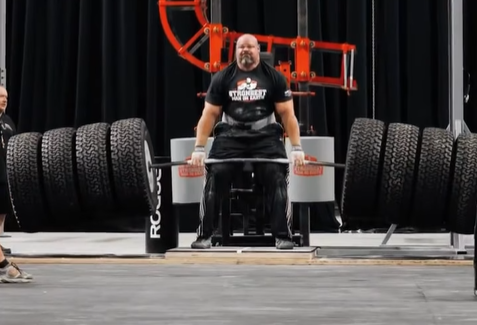
Summing it Up
Lastly, the biggest thing you can do is look in the mirror and give yourself a self-evaluation. Some people would call it self-criticism. Find out where your value is and how you can help a strongman or strongwoman athlete.
It's a leap of faith. You have to understand it's a lot different if you're a team sport. I've been a team sport strength coach for 30-plus years. What I learned in two years of training, one of the greatest strongmen of all time, will definitely make me a better team sport strength coach. But it was extremely challenging and a lot of nerve-wracking because now that athlete out there is relying on everything that we worked together to be the strongest that he or she can be on the day of competition. A lot of different types of stress.
One of the hardest jobs I ever had was training for the first time in my career, a single athlete or where it's just the individual out there against themself. I've coached wrestling before, and that's a little bit similar. I've coached powerlifting, but at this level, not so much. It was nerve-wracking, every event, every second that he was on the competitive floor because I knew how much it meant to him, and I had to be able to protect him not only with the programming but at the end, too. Hey, I take just as much fault as anybody that we didn't win those events. We had an opportunity to do it. That's part of coaching. If I'm going to jump up and down when he wins the trophy, I've got to be able to accept the fact that I was part of him not winning the trophy.
And a lot of people don't understand that. That's okay. That's just the way I believe. The greatest thing about competing in sports is you have a chance to win, but you also need to know you could lose, and you have to reevaluate how you going to rebuild. Self-criticize and understand the process of how to do this again and put my athlete in a better chance to be successful moving forward.
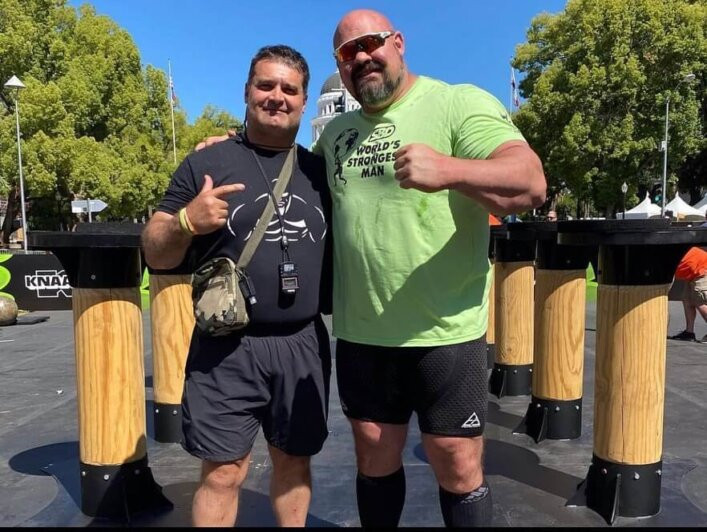
So that's a little bit of my summary of what I've learned. I still have a lot to learn. It's more of a story. But again, one of the things I will tell you is if you're looking to be a strongman or coach, you've got to get in a gym that trains Strongmen, and you've just got to observe. I don't care how long you've been a strength and conditioning coach. I don't care what levels. If you've never been in that space, you have to learn. I spent hours watching stuff on YouTube before Brian even gave me the call because I'm infatuated with the strength sports. I had a decent amount of understanding from the outside looking in. But once I was in the game, a white belt, I learned a lot of different things. But fortunately for me, Brian was great to work with. He brought me in at a time when he was already the greatest of all time.
I learned so much from Brian. He doesn't even understand, and I'm always thankful that he gave me an opportunity to coach one of the greatest athletes ever in their sport of choice. Understand the game. You have to understand what you're getting yourself into. Know what you know going in. Know where you need to find help.
Again, if you don't understand the events, the best way to learn the events is to do them yourself, at least the ones you can physically do. You don't have to do them at their level, but you have to understand what it feels like. I'm big into kinesthetic and feel what it feels like to you. And then try to relate what that feels like to them. You don't know how many times I watched Brian pull 1,000 pounds at the Arnold Classic on YouTube and tried to visualize what was going through his mind as he was preparing for the call of his name to go and then walking up to the load strapping in and then attempting the rep, you're trying to understand what that emotion feels like, all the work coming into play, and that's critical to being a good coach, is trying to visualize what the athlete is going through and then ask questions. Do not be afraid to ask questions. If you ask questions and you show the vulnerability that you do not know something, you get more credibility with the athlete.
At least they know you're willing to learn and willing to accept something new. So be aware of who you are when you get this opportunity with novices. It's a lot. I want to say easier, but there's much more growth because they're coming up with you. If you're training a novice and you happen to build this novice all the way up to the World's Strongest Man, you're going to know a lot more about that individual and how to really coach them than if you're jumping in the game with somebody who's already well experienced. Take that as a point of emphasis to where you're starting with a different athlete. But all in all, the biggest thing as a coach is to live and learn. Be a white belt even if you think you've got the experience because there's always something to learn. I learned so much from Brian, as much as I learned coaching ten-year-olds, that if I were ever in a team sports situation again, I know I'm going to be better for it because of what I've learned. Know what you're good at and exploit that, and then continue to understand where you can be of help and be a substantial part of the team.





